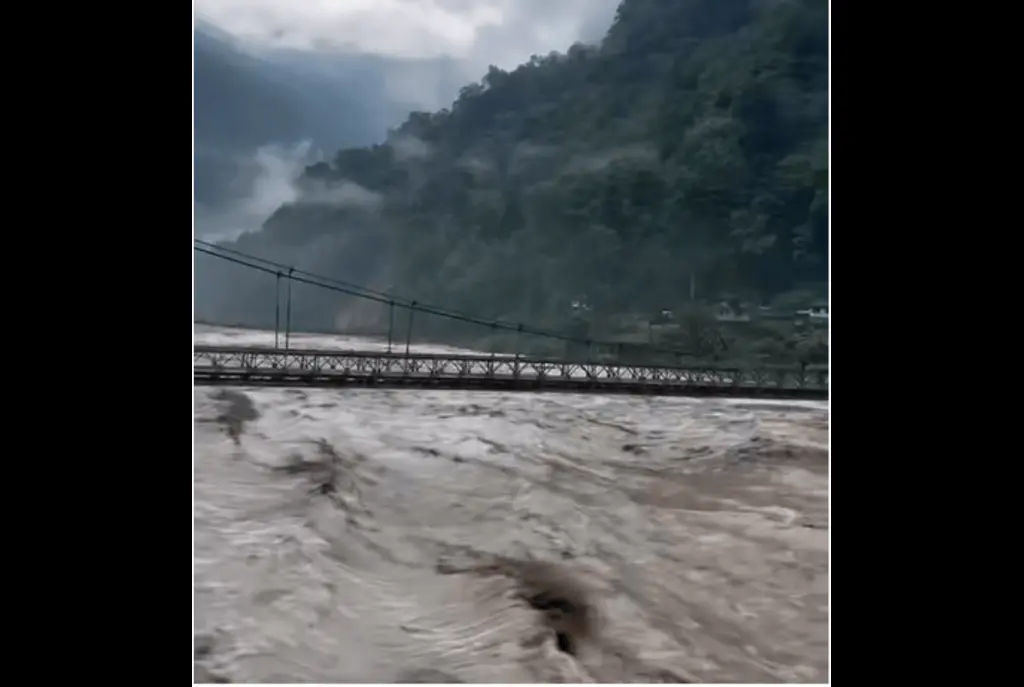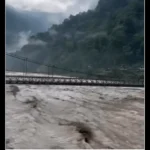Sikkim, a state famed for its lush green valleys and cascading waterfalls, is facing an unprecedented water crisis. New data from the Indian Meteorological Department (IMD) reveals a 35% monsoon shortfall between June and July 8, 2025, the worst deficit in five years. Only 365 mm of rain has fallen, compared to the usual 559 mm, leaving rivers shallow, farms parched, and officials bracing for drought.
This dry spell marks a dramatic reversal for Sikkim, which recorded 66% excess rainfall in June 2023 and surpluses for four consecutive years. “The monsoon trough, which usually brings moisture from the Bay of Bengal, has stayed south of its normal path for 38 days,” explains Gopinath Raha, Director of IMD Gangtok. “Without it, Sikkim’s lifeline is cut off”.
Why the Rain Vanished
The culprit is an unusual southward shift of the monsoon trough, driven by repeated low-pressure systems over the Bay of Bengal. These systems act like magnets, pulling rain clouds away from the Himalayas.
- District Breakdown: Gyalshing (-49%), Gangtok (-37%), and Mangan (-34%) are the most brutal hit. Only Soreng (-13%) nears normal rainfall.
- Global Context: Similar disruptions are reported worldwide. A 2025 Nature study found climate change reduces global crop yields by 4.4% per 1°C of warming, even with farmer adaptations.
Farmers on the Edge
The deficit poses a threat to Sikkim’s agrarian economy, where 64% of the workforce relies on farming.
- Crop Losses: Maize and wheat yields could drop by 20–30% if rains don’t return by mid-July, warns the Sikkim Agricultural Department.
- Water Stress: Gangtok’s reservoirs are at 45% capacity, forcing rationing in some neighborhoods.
“Last year, floods washed away my fields. Now, the soil is too dry to plant,” says Tenzing Bhutia, a farmer in Gyalshing. His story echoes across the state, where 80% of farms rely on rain-fed agriculture.
Climate Change’s Fingerprints
Sikkim’s whiplash weather, from floods to drought, aligns with global trends. The World Meteorological Organization confirmed 2024 as the hottest year on record (1.55°C above pre-industrial levels), exacerbating extreme weather.
- Himalayan Warning: Glacial retreat and erratic rain threaten water security for 1.5 billion people downstream.
- Economic Toll: Thailand’s 2025 climate report projects $17–83 billion in agricultural losses by 2050, a cautionary tale for Sikkim.
What’s Next?
IMD forecasts near-normal rainfall in July, but experts doubt it will offset the deficit. “Scattered showers won’t refill reservoirs or save crops,” says Raha.
Adaptation Steps Underway:
- Cloud-Seeding Trials: Pilots launched in Gangtok to induce rain.
- Drought-Resistant Crops: Quinoa and millet are promoted as alternatives to water-intensive staples.
- Policy Push: Sikkim petitions India’s climate task force for emergency funds.
A Wake-Up Call
Sikkim’s crisis highlights a harsh reality: even water-rich regions aren’t immune to disaster. As global temperatures rise, the IPCC warns of more frequent “climate whiplash” swings between deluge and drought.
“This isn’t just Sikkim’s problem,” says climate scientist Dr. Priya Mehta. “It’s a preview of what happens when natural cycles break down.”
For now, the state watches the skies, hoping the monsoon trough swings back before the taps run dry.










